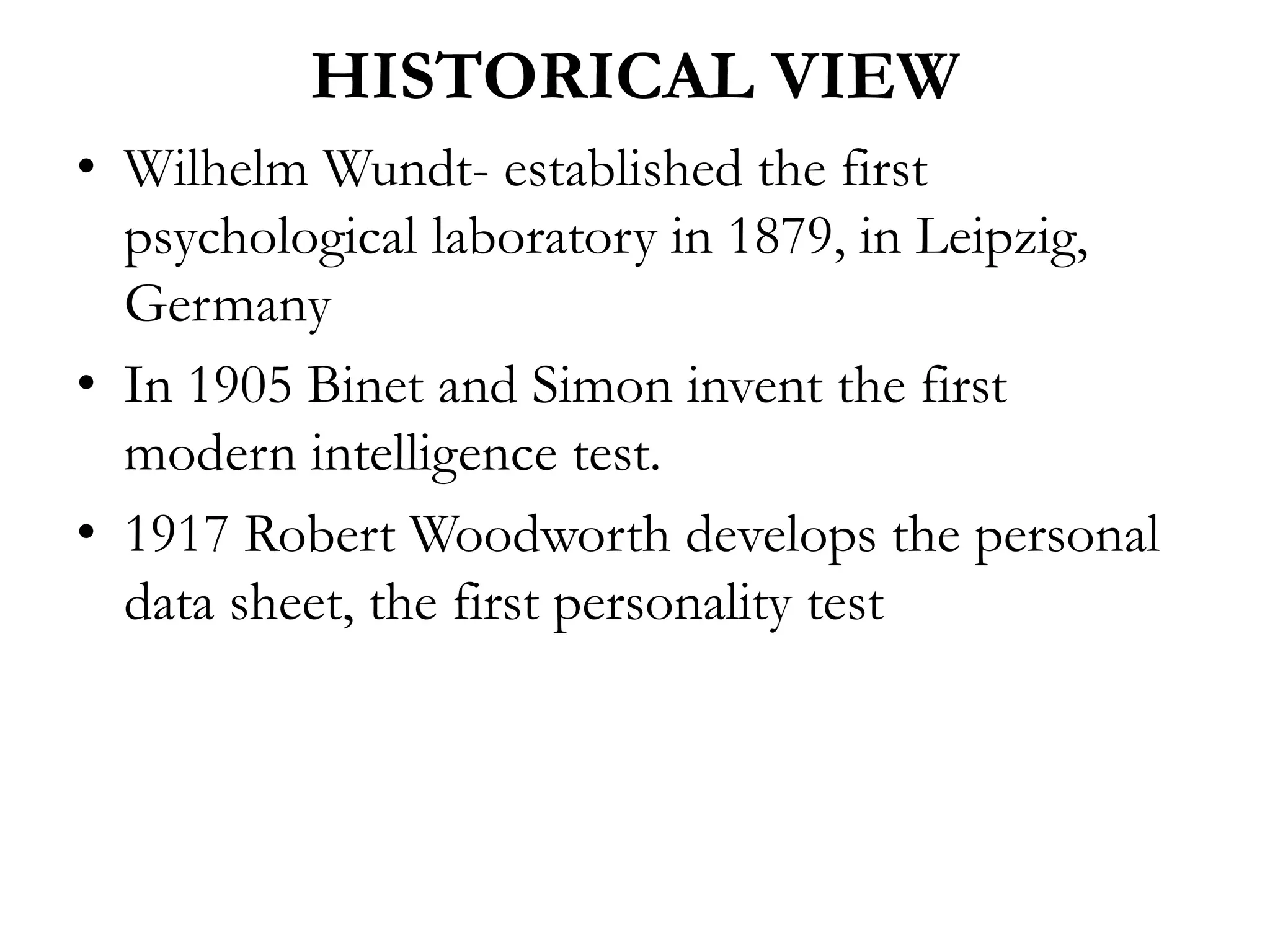This document provides an overview of psychological assessments. It defines psychological tests and their purposes which include classification, rehabilitation, diagnosis and treatment planning, self-knowledge, program evaluation, and research. It describes the historical development of key tests and discusses standards for assessing reliability and validity. Several commonly used personality tests are also outlined, including the MMPI-II, 16PF, NEO-PI-R, and TCI.
























